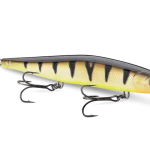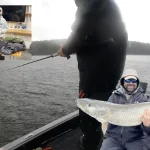Muskies are, without doubt, the most prized freshwater sportfish. Historically, catching just one has been a badge of honor, and expert anglers often spend several long days on the water to boat one. When it comes to managing muskies and muskie numbers, Wisconsin has the largest number of muskie waters—667 lakes, plus 48 rivers and streams. In Minnesota, muskies are native to 44 lakes and eight rivers, and they’ve been stocked in 48 others. Many of those waters offer outstanding fishing opportunities, with fish over 50 inches frequently caught.
Across the Midwest and the North, opportunities to catch muskies have increased in recent decades as state management agencies have introduced them to lakes and reservoirs suited for them to succeed. Today there is fantastic musky fishing available in New York, Ohio, Pennsylvania and Michigan.

Minnesota is home to many die-hard muskie fans and it attracts anglers from other states because of the quality of fishing. As a result, muskie anglers and biologists with the Minnesota Department of Natural Resources (MNDNR) have sought to stock low densities of muskies in some waters where reproduction is limited and to introduce them to new waters.
The plan is to increase opportunities for anglers to catch these trophy, build fisheries in regions with few muskie waters, and keep pace with growing muskie fishing participation. But unlike other states where muskies are found, stocking has met strong opposition.
MNDNR had planned to stock muskies into eight new lakes by 2020 and did stock five before political pushback caused the agency to shelve the plan. Opposition to muskie stocking brought lawmakers into the fold of fisheries management. Bills have been introduced to halt stocking, responding to political pressure from lake associations and individuals who proclaimed the dangers of muskies to other gamefish populations and even to swimmers!

Recently in managing muskies, there’ve been bills to reduced the minimum length limit on muskies to 20 inches in some waters and allowed them to be speared through the ice. Also a provision allowing Minnesota county boards to decide which species the DNR could stock. Lawmakers making fisheries management decision dangerous precedent, removing critical authority from the agency that’s tasked with wisely managing lakes. Though bills have been shot down in the past, it threatens to appear again this year, as rhetoric from some sectors has been strong.
DNR biologists point to scientific data demonstrating that while muskies are liable to eat any fish, their diet contains few walleyes, bass, or crappies. But that hasn’t stopped muskie opponents from disparaging this work, loudly stating their unfounded opinions, pushing legislators into action and demanding the right to manage local waters. We anticipate more public hearings on this topic and urge muskie supporters to make their voices heard.
At Lindner Media, we’ve long promoted fishing for all species, knowing that each one offers unique features. Muskies exist at a very low density (fewer than one per acre) in the best waters. Minnesota’s success story with muskies is incredible and se need to support fishing opportunities, not destroy them.















